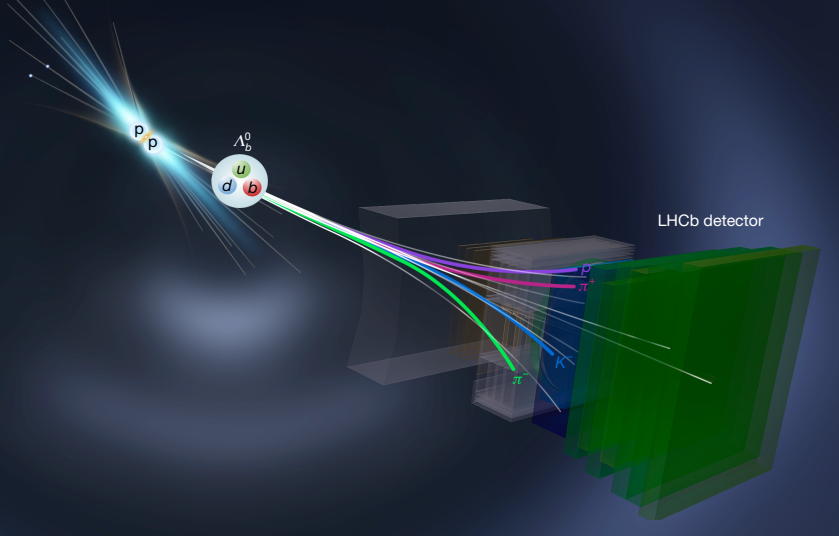At the heart of modern physics lies a profound question: why does our universe consist almost entirely of matter, rather than being annihilated by its mirror image, antimatter?
Recent experiments at CERN have brought us closer to unraveling this mystery with compelling evidence of a fundamental difference in how matter and antimatter behave.

An illustration of matter and antimatter decay products, and how the LHC picks them up. (LHCb Collaboration, Nature, 2025)
What is the Large Hadron Collider (LHC)?
CERN (the European Organization for Nuclear Research) is the world's premier laboratory for particle physics. Its main function is to provide the particle accelerators and other infrastructure needed for high-energy physics research.
Located 100 meters (about 330 feet) underground on the border between France and Switzerland, CERN's flagship instrument is the Large Hadron Collider (LHC). The LHC is the world's largest and most powerful particle accelerator, a 27-kilometer (17-mile) ring of superconducting magnets. Inside, two beams of particles are accelerated to almost the speed of light and then collided at four specific points.
These collisions generate conditions similar to those just moments after the Big Bang, allowing scientists to study the fundamental particles and forces that shape our universe.
Unveiling CP Violation in Baryons
Physicists at the Large Hadron Collider have made a landmark observation. For the first time, they detected charge-parity (CP) violation in baryons, the particles forming most of the visible universe. Previously, CP violation had only been seen in mesons, a different class of subatomic particles. This discovery marks a crucial expansion in our understanding of particle behavior.
- Roughly 80,000 particle decay events from 2011 to 2018 were analyzed, focusing on lambda-beauty (Λb) baryons.
- A 2.5 percent difference was found in the decay rates between Λb baryons and their antimatter counterparts.
- The result had a significance of 5.2 sigma, indicating an extremely low probability of random chance.
Why This Asymmetry Matters
According to the Big Bang theory, equal parts of matter and antimatter should have been created. If they behaved identically, their mutual annihilation would have left a void. Instead, a slight excess of matter survived. The observed CP violation is a vital clue, suggesting the laws of physics treat matter and antimatter differently.
- CP symmetry posits that matter and antimatter should behave identically, but CP violation shows subtle differences.
- The Standard Model predicts some CP violation, but not enough to explain the overwhelming presence of matter.
- This baryon discovery offers fresh data to test the Standard Model and search for new physics.
What Comes Next in the Search for Answers
Although the observed CP violation aligns with current theories, it’s still insufficient to fully explain the universe’s matter dominance. The findings, however, open new pathways in particle physics, especially in the relatively uncharted field of baryon behavior.
- Physicists are actively looking for additional sources of CP violation beyond the Standard Model.
- Discovering these could uncover entirely new physics and deepen our grasp of the universe’s earliest moments.
A Step Toward Understanding Existence
This milestone at CERN offers a new window into one of science’s deepest mysteries. By pinpointing differences between matter and antimatter in the building blocks of our universe, researchers are moving closer to answering why anything exists at all. While many questions remain, this achievement lights the way for future discoveries.

Antimatter Breakthrough: How CERN's Discovery Sheds Light on the Universe's Origins